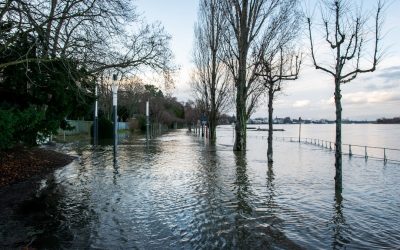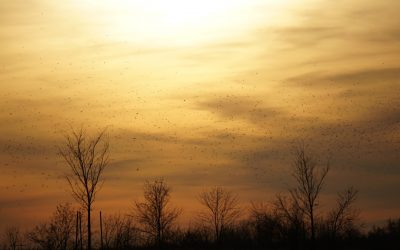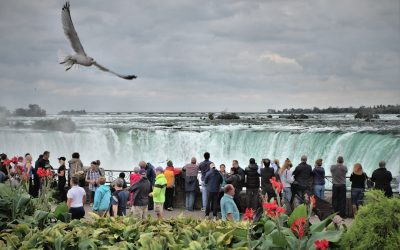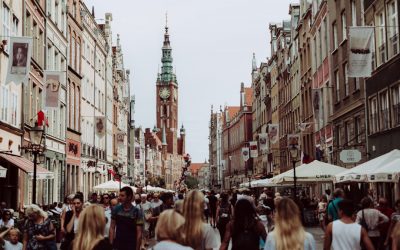Explore the World Through Geography, Natural Resources & Daily History
Clear, reliable and engaging guides that help you understand our planet — from UK geography education to global natural resources and On This Day history events.
Explore, discover, and learn about the wonders of our world! At Earth Site, we’re passionate about bringing geography, history, and science to life for curious minds of all ages. Whether you’re delving into historical events, uncovering the mysteries of the natural world, or seeking interactive resources, you’re in the right place.
Here, you can uncover the stories behind historical events, explore the natural wonders of our planet, and gain valuable insights into how the Earth’s systems shape our daily lives. From the towering peaks of mountain ranges to the far-reaching impacts of human innovation, we aim to make every topic both engaging and informative.
Start your journey of discovery with us today, and let’s make learning an adventure!
What We Cover
Earth Site brings together engaging and accessible educational content designed to help you understand the world, its history, and its natural systems.
🌍 Geography Education (UK & Worldwide)
We publish clear, easy-to-understand geography resources for students, teachers and curious learners. Our guides support geography education in the UK and cover physical geography, climate, ecosystems, population, and global development.
⛏️ Natural Resources & Environmental Geography
Explore detailed country profiles covering natural resources, mining, energy, geology and global environmental challenges. We show how nations manage minerals, water, land and ecosystems, and why these resources matter.
📅 On This Day in History
Every day has a story. Our On This Day history series features major events, anniversaries, traditions, and cultural milestones from around the world — with timelines, context, and fun facts.
TIMELINE
Maine
Maine, located in the northeastern part of the United States, is the northernmost state in New England. It is bordered by New Hampshire to the west and the Canadian provinces of Quebec and New Brunswick to the north and east, respectively. With a population of approximately 1.3 million people, Maine is the least densely populated state in the country. The state’s economy is diverse, with major industries including tourism, fishing, manufacturing, and agriculture. Summary Maine is a state located in the northeastern region of the United States. Maine has a rich history and culture, with a strong maritime tradition and a significant role in the American Revolution. The geography of Maine is characterized by its rugged coastline, dense forests, and numerous lakes and rivers. Some of the most famous landmarks and tourist attractions in Maine include Acadia National Park, Portland Head Light, and the Maine Maritime Museum. Maine is home to a diverse range of wildlife and natural resources, including moose, lobster, and blueberries. History and Culture of Maine Maine has a rich Native American history, with several tribes calling the area home for thousands of years before European settlement. The Wabanaki Confederacy, which includes the Penobscot, Passamaquoddy, Maliseet, and Micmac tribes, has a strong presence in the state. These tribes have a deep connection to the land and continue to maintain their cultural traditions. European exploration and settlement began in the early 17th century, with French and English explorers vying for control of the region. The French established a settlement at Port Royal (now Annapolis Royal) in present-day Nova Scotia, while the English established settlements along the coast...
Louisiana
Located in the southern region of the United States, Louisiana is a state known for its rich history, vibrant culture, and natural beauty. It is often referred to as “The Pelican State” due to the abundance of pelicans found along its coastlines. With a population of approximately 4.6 million people, Louisiana is a diverse state that is home to a mix of cultures and traditions. Summary Louisiana is known as The Pelican State and is located in the southern United States. Louisiana has a rich history and culture, influenced by French, Spanish, and African American traditions. The state is home to beautiful bayous, swamps, and wetlands, which are important ecosystems and tourist attractions. Louisiana’s cuisine is famous for dishes like gumbo and jambalaya, which reflect the state’s diverse cultural influences. New Orleans is the heart of Louisiana’s music and festival scene, with famous landmarks like the French Quarter and Mardi Gras. The History and Culture of Louisiana Louisiana’s history is deeply rooted in its colonial past, which has had a significant impact on the state’s culture. The French were the first Europeans to settle in Louisiana, establishing a colony in 1699. The Spanish took control of the territory in 1763, but it was returned to France in 1800 before being sold to the United States as part of the Louisiana Purchase in 1803. The influence of African American, Native American, and French cultures can be seen throughout Louisiana. African Americans have played a crucial role in shaping the state’s culture, particularly through their contributions to music, cuisine, and language. Native American tribes such as the Choctaw, Houma, and Chitimacha...
Kentucky
Kentucky, also known as the Bluegrass State, is a state located in the southeastern region of the United States. It is known for its beautiful landscapes, rich history, and vibrant culture. In this blog post, we will explore the various aspects that make Kentucky a unique and fascinating destination. From its early Native American settlements to its role in the Civil War, from its natural wonders to its culinary delights, from its sporting traditions to its arts and culture scene, we will delve into all that Kentucky has to offer. Summary Kentucky has a rich history, from its frontier days to becoming a commonwealth. The Bluegrass State boasts natural wonders, including Mammoth Cave and the Red River Gorge. Kentucky’s culinary delights range from bourbon to fried chicken, with a focus on Southern comfort food. Horse racing is a major sporting tradition in Kentucky, but the state also offers opportunities for hunting and fishing. Kentucky’s arts and culture scene is diverse and includes everything from bluegrass music to contemporary art. The History of Kentucky: From Frontier to Commonwealth Kentucky has a long and storied history that dates back thousands of years. The area was originally inhabited by Native American tribes such as the Cherokee, Shawnee, and Chickasaw. European exploration and settlement began in the late 17th century, with French explorers claiming the land for France. However, it was ultimately ceded to Britain after the French and Indian War. During the American Revolutionary War, Kentucky played a crucial role as a frontier territory. It was a site of many battles between American settlers and Native American tribes allied with the British....
Kansas
Kansas, also known as the Sunflower State, is located in the Midwestern region of the United States. It is bordered by Nebraska to the north, Missouri to the east, Oklahoma to the south, and Colorado to the west. With a total area of 82,278 square miles, Kansas is the 15th largest state in the country. Despite its relatively small population compared to other states, Kansas plays a significant role in the United States both historically and economically. Summary Kansas is a state located in the Midwestern region of the United States. The state is known for its flat terrain, prairies, and wheat fields. Kansas has a rich history, including its role in the Civil War and as a major stop on the Santa Fe Trail. The economy of Kansas is largely based on agriculture, with wheat, corn, and soybeans being major crops. Notable landmarks and attractions in Kansas include the Tallgrass Prairie National Preserve, the Kansas State Capitol, and the Dwight D. Eisenhower Presidential Library and Museum. Geographical features of Kansas Kansas is characterized by its vast plains and rolling hills. The state has a diverse topography, ranging from flat prairies in the east to rugged hills and canyons in the west. The eastern part of Kansas is part of the Great Plains region, while the western part is part of the High Plains. The climate in Kansas varies from humid continental in the east to semi-arid in the west. Kansas is rich in natural resources, including oil, natural gas, coal, and limestone. The state is also known for its fertile soil, making it an ideal location for agriculture....
Iowa
Located in the heartland of the United States, Iowa is a state that often flies under the radar. However, this Midwestern gem has a rich history, diverse geography, and a thriving economy that make it a significant player in the country. Known as the “Hawkeye State,” Iowa is home to rolling hills, fertile farmland, and the mighty Mississippi River. With its strong agricultural industry, top-ranked universities, and vibrant arts and culture scene, Iowa has something to offer everyone. Summary Iowa is known as the Hawkeye State and has a rich history dating back to Native American settlements. The state is home to rolling hills, the mighty Mississippi River, and is known as the Corn Belt of America. Iowa is home to top-ranked universities and colleges, including the University of Iowa and Iowa State University. Sports fans can enjoy Hawkeye football and other athletic events, while arts and culture enthusiasts can celebrate the state’s heritage. Visitors can discover hidden gems and must-see attractions in Iowa, while the state’s diverse economy and thriving small businesses offer opportunities for growth and development. History of Iowa: From Native American Settlements to Statehood Before European settlers arrived, Iowa was home to various Native American tribes, including the Meskwaki and Sauk. These tribes lived off the land, hunting buffalo and farming the fertile soil. In the early 1800s, European settlers began to move into the area, leading to conflicts with the Native Americans. The Black Hawk War of 1832 was a significant event in Iowa’s history, as it marked the end of Native American resistance in the region. Iowa became a territory in 1838 and...
Indiana
Indiana, also known as the Hoosier State, is a state located in the Midwestern region of the United States. It is bordered by Michigan to the north, Ohio to the east, Kentucky to the south, and Illinois to the west. With a population of over 6 million people, Indiana is the 17th most populous state in the country. The capital and largest city of Indiana is Indianapolis. Summary Indiana is a state located in the Midwest region of the United States. The climate in Indiana is characterized by hot summers and cold winters. Indiana has a rich history dating back to pre-colonial times, with significant contributions to the Underground Railroad and the Civil War. The economy of Indiana is diverse, with agriculture, manufacturing, and services being major industries. Indiana is known for its vibrant culture and society, with a thriving arts scene, music festivals, and sports teams. The Geographical Location and Climate of Indiana Indiana is situated in the eastern part of the Midwest region of the United States. It covers an area of approximately 36,418 square miles, making it the 38th largest state in terms of land area. The state is characterized by its diverse geography, with rolling hills in the southern part and flat plains in the northern part. Indiana experiences a humid continental climate, with hot summers and cold winters. The average temperature in July, the hottest month, ranges from 75°F (24°C) in the north to 80°F (27°C) in the south. In January, the coldest month, temperatures can drop to an average of 20°F (-7°C) in the north and 25°F (-4°C) in the south. The state...
Illinois
Illinois, also known as the Prairie State, is a state located in the Midwestern region of the United States. It is the sixth most populous state in the country, with a population of over 12 million people. Illinois is bordered by Indiana to the east, Kentucky to the southeast, Missouri to the west, and Wisconsin and Iowa to the north. Its capital is Springfield, while its largest city is Chicago. Summary Illinois is known as the Prairie State due to its vast grasslands and prairies. The state has a rich history dating back to Native American settlements and has played a significant role in modern times. Illinois has a diverse geography and climate, ranging from flat prairies to rolling hills and humid summers to cold winters. The state’s economy is driven by agriculture, industry, and trade, with Chicago being a major hub for commerce. Illinois has a strong education system, with top-ranked universities and colleges, as well as excellent public and private schools. History of Illinois: From Native American Settlements to Modern Times The history of Illinois dates back thousands of years, with evidence of Native American settlements in the region as early as 10,000 BC. The area was inhabited by various tribes, including the Illiniwek and Miami, before European colonization began in the 17th century. The French were the first Europeans to explore and settle in Illinois, establishing trading posts and forts along the Mississippi and Illinois rivers. In 1763, after the French and Indian War, Illinois came under British control. However, it was soon ceded to the newly formed United States after the American Revolution. Illinois became...
Idaho
Idaho, known as the “Gem State,” is located in the northwestern region of the United States. It is bordered by six states: Montana to the east, Wyoming to the northeast, Nevada and Utah to the south, Oregon to the west, and Washington to the northwest. With a population of over 1.7 million people, Idaho is the 39th most populous state in the country. Despite its relatively small population, Idaho is known for its diverse geography, rich history, and thriving industries. Summary Idaho is known as the Gem State of America. Idaho has a diverse landscape and climate, ranging from mountains to deserts. Idaho has a rich history, from Native American settlements to statehood. Idaho’s economy is driven by agriculture, mining, and tourism. Idaho places a strong focus on STEM and vocational training in education. Geography and Climate of Idaho: A Diverse Landscape Idaho boasts a diverse landscape that includes mountains, forests, and deserts. The state is home to the Rocky Mountains, with the highest peak being Borah Peak at 12,662 feet (3,859 meters). The Sawtooth Range is another prominent mountain range in Idaho, known for its jagged peaks and stunning alpine lakes. In addition to its mountains, Idaho is also home to vast forests that cover approximately 40% of the state’s land area. These forests are not only beautiful but also provide valuable resources such as timber. Idaho’s climate varies greatly depending on location. The southern part of the state has a semi-arid climate with hot summers and mild winters. The northern part of the state experiences a subarctic climate with cold winters and mild summers. The central part...
Hawaii
Hawaii, often referred to as a paradise on earth, is a popular tourist destination known for its natural beauty, stunning beaches, and vibrant culture. Located in the Pacific Ocean, Hawaii is the only state in the United States that is entirely composed of islands. The archipelago consists of eight main islands: Hawaii (also known as the Big Island), Maui, Oahu, Kauai, Molokai, Lanai, Niihau, and Kahoolawe. Each island offers its own unique attractions and experiences, making Hawaii a diverse and captivating destination for travellers from around the world. The allure of Hawaii lies in its breathtaking landscapes, from lush rainforests and cascading waterfalls to volcanic craters and pristine beaches. Visitors can explore the stunning Waimea Canyon on Kauai, hike through the Haleakala National Park on Maui, or relax on the world-famous beaches of Waikiki on Oahu. The islands are also home to a rich cultural heritage, with a blend of Polynesian, Asian, European, and American influences. From traditional hula dancing to vibrant festivals and celebrations, Hawaii offers a truly immersive cultural experience. Summary Hawaii is a beautiful island state in the Pacific with a rich history and diverse ecosystem. The culture and traditions of Hawaii are a unique blend of East and West, reflected in its food and cuisine. Adventure tourism in Hawaii offers a range of activities, from surfing to hiking, for visitors to enjoy. Hawaii’s economy is driven by tourism, agriculture, and technology, but sustainable development is a key concern for the state. Hawaiian festivals and celebrations are a colourful calendar of events that showcase the state’s rich cultural heritage. History of Hawaii: From Ancient Times to...
Georgia
Georgia (Sakartvelo) Capital: Tbilisi Population (Estimated July 2012): 4,570,934 Area: 69,700 km2 or 26,911 mi2 Currency: Georgian Lari (GEL) Official Language: Georgian Political Information: Unitary Semi-Presidential Republic Official Religion: Orthodox Christian (approximately 83.9% of the population are Orthodox Christian, 9.9% are Muslim, 3.9% are Armenian-Gregorian, 1.6% have other religious beliefs and 0.7% have no religious beliefs) Highest Mountain: Mt’a Shkhara at 5,201m or 17,064ft GDP Official Exchange Rate (OER is more precise at gauging a countries economic power) (Estimated 2011): $13.8 billion (US$) or (GBP) GDP (OER) Per Capita (per member of the population estimated 2011): (US$) or (GBP) GDP Purchasing Power Parity (PPP is good for gauging living conditions and use of resources but not as accurate as OER. This data has been calculated based on the sum value of all goods and services produced in the country valued at prices prevailing in the United States) (Estimated 2011): $24.51 billion (US$) or (GBP) GDP (PPP) Per Capita (per member of the population estimated 2011): $5,400 (US$) or (GBP) Time Zone (GMT/UTC): +4:00 Wildlife: Counties/Provinces/States: 9 regions (mkharebi, singular – mkhare), 1 city (k’alak’i), and 2 autonomous republics (avtomnoy respubliki, singular – avtom respublika) regions: Guria, Imereti, Kakheti, Kvemo Kartli, Mtskheta-Mtianeti, Racha-Lechkhumi and Kvemo Svaneti, Samegrelo and Zemo Svaneti, Samtskhe-Javakheti, Shida Kartli city: Tbilisi autonomous republics: Abkhazia or Ap’khazet’is Avtonomiuri Respublika (Sokhumi), Ajaria or Acharis Avtonomiuri Respublika (Bat’umi) note: the administrative centers of the two autonomous republics are shown in parentheses Leaders: President Mikheil Saakashvili with Prime Minister Nikoloz Gilauri Additional: Gained Independence from the Soviet Union on the 9th of April 1991. Sources: CIA World Fact Book, Encyclopaedia Britannica. Georgia Georgia, located at the crossroads of Europe and Asia, is a country known for...
Florida
Florida, also known as the Sunshine State, is a state located in the southeastern region of the United States. It is bordered by the Gulf of Mexico to the west, Alabama and Georgia to the north, and the Atlantic Ocean to the east. With a population of over 21 million people, Florida is the third most populous state in the United States. Florida holds great importance in the United States for several reasons. Firstly, it is a major tourist destination, attracting millions of visitors each year with its beautiful beaches, theme parks, and vibrant cities. Secondly, Florida has a significant impact on national politics, often being a key swing state in presidential elections. Lastly, Florida’s economy is diverse and robust, with key industries such as agriculture, tourism, and technology contributing to its growth and prosperity. Summary Florida is known as the Sunshine State due to its warm and sunny climate. The state’s geography includes beaches, swamps, and forests, and is prone to hurricanes. Florida has a rich history dating back to Native American tribes and Spanish colonization. The population of Florida is diverse, with a mix of ethnicities, cultures, and languages. The state’s economy is driven by agriculture, tourism, and technology industries. The Geography and Climate of Florida Florida is located on a peninsula that extends into the Atlantic Ocean and Gulf of Mexico. It is known for its unique shape, resembling a panhandle in the northwest and a long peninsula in the southeast. The state has a total area of approximately 65,755 square miles. Florida’s climate is generally warm and humid, with mild winters and hot summers. The...
Delaware
Welcome to this comprehensive guide to the state of Delaware! In this blog post, we will cover everything you need to know about Delaware, from its location and history to its economy, education system, healthcare facilities, natural beauty, culture and arts scene, sports scene, cuisine, shopping options, and transportation system. Whether you are planning a visit or considering moving to Delaware, this guide will provide you with all the information you need to make informed decisions. Summary Delaware is a small state located on the east coast of the United States. The state has a rich history, having been one of the original 13 colonies and playing a key role in the American Revolution. Delaware’s economy is diverse, with industries such as healthcare, finance, and manufacturing playing important roles. The state is home to several notable colleges and universities, including the University of Delaware and Delaware State University. Delaware’s natural beauty is a major draw for tourists, with attractions such as Cape Henlopen State Park and Rehoboth Beach. Overview of Delaware: Location, History, and Demographics Delaware is a small state located on the East Coast of the United States. It is bordered by Maryland to the south and west, Pennsylvania to the north, and New Jersey to the northeast. Despite its small size, Delaware has a rich history dating back to the early colonial period. It was one of the original 13 colonies and played a significant role in the American Revolution and the formation of the United States. Delaware has a diverse population with a mix of ethnicities and cultures. According to the latest census data, the population...











